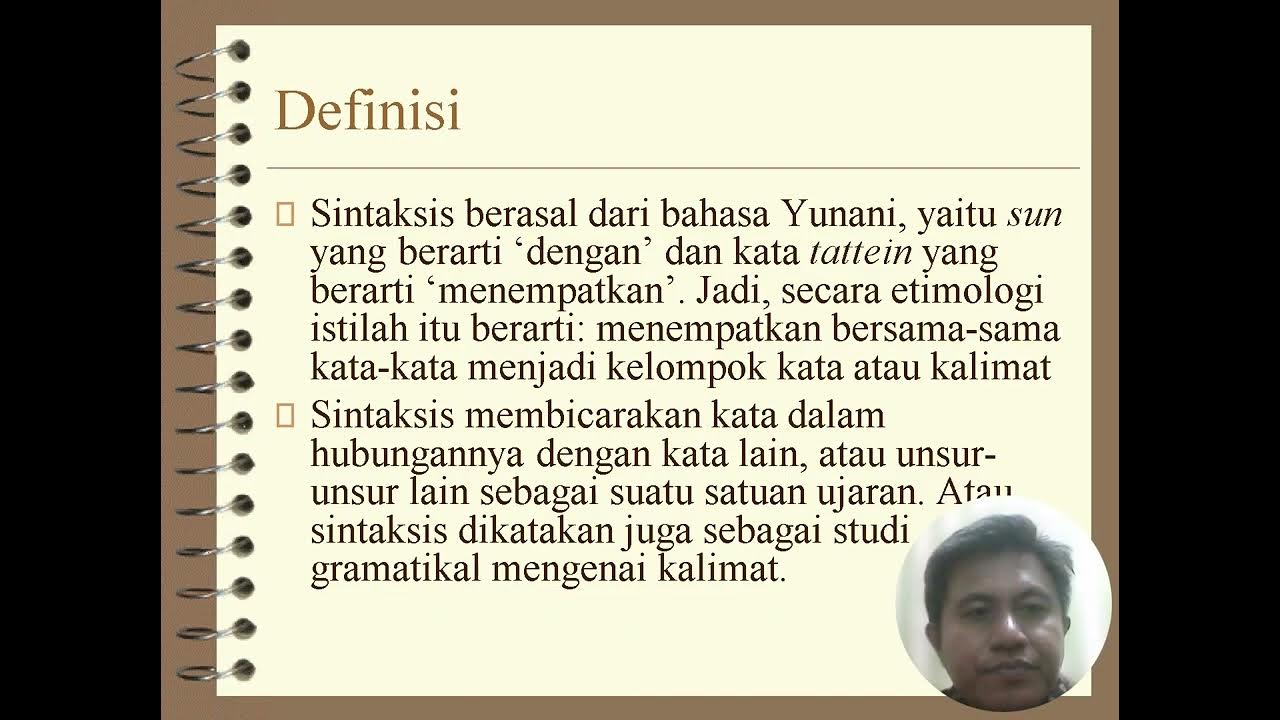German Sentence Structure COMPLETE! | TeKaMoLo | YourGermanTeacher
Summary
TLDRThis video provides a detailed explanation of German sentence structure, focusing on word order and the positioning of sentence elements such as subjects, objects, and adverbs. It covers key tendencies like 'old before new' and 'definite before indefinite' when using articles. The video emphasizes understanding word order in various sentence types, including temporal, causal, and modal expressions. Through numerous examples, the video demonstrates how to construct clear, grammatically correct sentences in German, making it an essential resource for learners aiming to improve their understanding of German syntax and sentence construction.
Takeaways
- 😀 Sentence structure in German follows specific tendencies like subject-before-object and old-before-new information.
- 😀 In German sentences, the subject usually comes before the object (e.g., 'Ich fahre morgen ins Büro').
- 😀 The placement of definite and indefinite articles in German is important to convey new vs. known information.
- 😀 Articles like 'der' and 'ein' are used to indicate whether the information is known or new, with definite articles used for known information.
- 😀 Word order is flexible, but typically, the most important information is placed at the end of the sentence for emphasis.
- 😀 Temporal, causal, and modal elements can affect word order, with time phrases often placed early and reasons or conditions at the end.
- 😀 Modal verbs, like 'sollen', are used to indicate necessity or obligation, and can influence sentence structure.
- 😀 In more complex sentences, adverbial phrases (time, place, cause) follow a set order: time → cause → manner → place.
- 😀 When constructing sentences with multiple elements, the order generally follows: subject → verb → object → other details (time, place, etc.).
- 😀 The use of pronouns and articles in sentences is crucial for maintaining clarity, especially when referring to previously mentioned subjects or objects.
- 😀 Practice and familiarity with word order tendencies help in constructing grammatically correct German sentences, especially when emphasizing certain parts of the sentence.
Q & A
What is the basic sentence structure in German?
-The basic sentence structure in German follows the order: Subject (S) + Verb (V) + Object (O). For example, 'Morgen kaufe ich einen Computer' ('Tomorrow, I will buy a computer').
How do German sentence structures handle known and new information?
-In German, known or old information typically comes at the beginning of the sentence, while new information is placed at the end. This helps to emphasize the most important part of the sentence.
What role do definite and indefinite articles play in German sentences?
-Definite articles (der, die, das) refer to specific or known things, while indefinite articles (ein, eine) refer to unspecified or new things. For example, 'Ich habe ein Auto' ('I have a car') vs. 'Das Auto ist rot' ('The car is red').
Can you explain the importance of word order in subordinate clauses in German?
-In subordinate clauses, the verb typically moves to the end of the clause. For instance, 'Ich fahre morgen mit dem Auto ins Büro, weil es regnet' ('I’m driving to the office tomorrow because it’s raining').
How do modal verbs affect sentence structure in German?
-In sentences with modal verbs (like 'können', 'dürfen', 'müssen'), the main verb moves to the end. For example, 'Ich kann heute nicht kommen' ('I cannot come today').
What is the typical order of temporal, causal, modal, and local elements in a German sentence?
-The typical order is: Temporal (Time), Causal (Reason), Modal (Manner), and Local (Place). For example, 'Ich fahre morgen meine Frau wegen des Regens mit dem Auto ins Büro' ('Tomorrow, I drive my wife to the office because of the rain with the car').
How can the order of sentence elements be changed for emphasis in German?
-While the typical order of sentence elements is Subject-Verb-Object, you can rearrange elements to emphasize certain parts of the sentence. For example, 'Wegen des Regens fahre ich morgen meine Frau mit dem Auto ins Büro' ('Because of the rain, I drive my wife to the office tomorrow with the car').
What is the rule for placing articles in German sentences?
-In German, definite articles (der, die, das) are used for specific or previously mentioned items, while indefinite articles (ein, eine) are used for general or new information. For instance, 'Ich schicke dem Kunden eine E-Mail' ('I send the customer an email').
What does the phrase 'Alt vor neu' mean in German sentence structure?
-'Alt vor neu' means 'old before new'. This principle suggests that known or previously mentioned information should be placed earlier in a sentence, while new or unfamiliar information comes later. For example, 'Du schickst dem Kunden eine E-Mail' ('You send the customer an email').
How does the sentence structure change in German when using a modal verb with a direct object?
-When a modal verb is used, the main verb moves to the end of the sentence, even if there is a direct object. For example, 'Ich muss das Buch lesen' ('I must read the book').
Outlines

このセクションは有料ユーザー限定です。 アクセスするには、アップグレードをお願いします。
今すぐアップグレードMindmap

このセクションは有料ユーザー限定です。 アクセスするには、アップグレードをお願いします。
今すぐアップグレードKeywords

このセクションは有料ユーザー限定です。 アクセスするには、アップグレードをお願いします。
今すぐアップグレードHighlights

このセクションは有料ユーザー限定です。 アクセスするには、アップグレードをお願いします。
今すぐアップグレードTranscripts

このセクションは有料ユーザー限定です。 アクセスするには、アップグレードをお願いします。
今すぐアップグレード関連動画をさらに表示

Sintaksis

Introducción a la Morfosintaxis

What is Subject, Verb, Object, Complement, Modifier: Grammatical Functions [basic English grammar]

Grammar Lesson. How to make Sentences in English. Word Order in English.

[95] Verben mit Ergänzungen - Was ist der Unterschied zwischen Ergänzung und Angabe?

Learn German Intermediate | Reflexivverben | Reflexivpronomen | B1 - Lesson 1
5.0 / 5 (0 votes)
